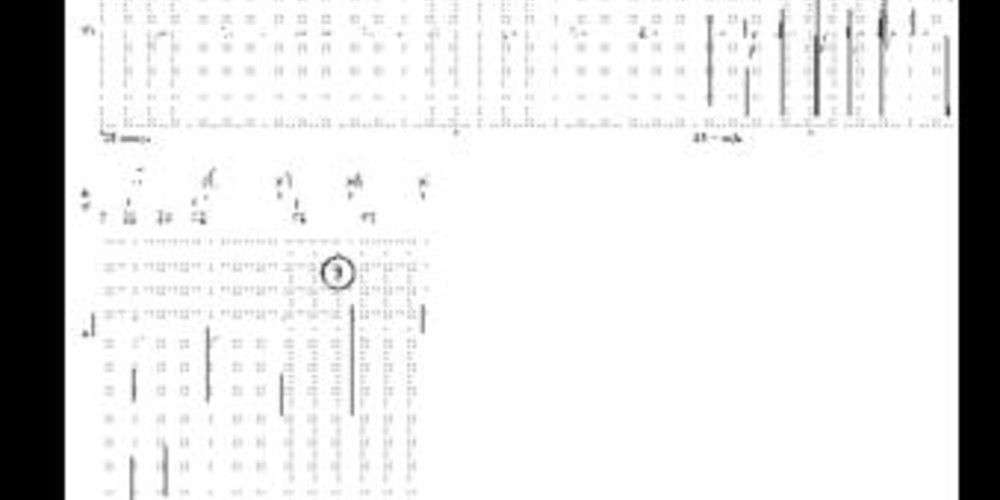Ventricular arrhythmias on exertion
Tracing
Manufacturer Biotronik
Device PM
Field Programming for exercise
N° 26
Patient
A 67-year-old male coronary patient implanted with an Evia DR-T dual-chamber pacemaker for complete atrioventricular block; highlighting of episodes diagnosed as non-sustained ventricular tachycardia stored in the device's memory.

Graph and trace
Tracing 26a
VT episode recorded in memory;
- AS-VP cycle likely occurring during exertion (rate above 100 bpm);
- non sustained ventricular tachycardia burst (atrioventricular dissociation);
- spontaneous termination;
Tracing 26b
An exercise test (repeated flexions) is performed during the consultation with recording of a tracing and atrial and ventricular EGMs;
- rest; rate <60 bpm with AS-VP cycles;
- after a few flexions, acceleration of the rate (95 bpm);
- first ventricular extrasystole;
- ventricular bigeminism;
- P wave blocked in the PVARP; on the previous cycle, the P wave following the PVC falls within the far-field protection period and is therefore not counted in the calculation of atrial rate; the ensuing P wave falls within the PVARP;
- chest discomfort experienced by the patient; polymorphic ventricular triplet.
Other articles that may be of interest to you







The demonstration of ventricular extrasystoles during this exercise test led to the conducting of a new coronary angiography in this known and treated coronary patient which showed the presence of a severe stenosis of the anterior interventricular branch. An angioplasty with stent placement was performed in this setting with good angiographic results. The combination of chest discomfort and the occurrence of a polymorphic ventricular extrasystole at the peak of exertion led to suspect the presence of myocardial ischemia which was confirmed by the demonstration of a significant stenosis.
In this coronary patient, the choice was initially made to program a low maximum synchronous rate (110 bpm), which appears unwise in this active patient with complete atrioventricular block. Indeed, the patient's chronotropic status is relatively preserved in spite of a well-monitored beta-blocker treatment. If the sinus rate of the patient exceeds the maximum synchronous rate at exertion, a physiologically-poor Wenckebach phenomenon occurs with the presence of blocked P waves. Just as it is legitimate to limit the response rate in a coronary patient with chronotropic incompetence, it would appear just as inappropriate to limit the increase in ventricular rate in a patient with complete atrioventricular block by a low-programmed maximum synchronous rate.